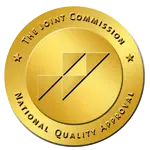Depression is one of the most common mental health disorders in the United States. There are five types of depressive disorders listed in the Diagnostic and Statistical Manual of Mental Disorders, Fifth Edition (DSM-V), the most recent manual developed for diagnosing mental health disorders. These depressive disorders include major depression, persistent depressive disorder (PDD), perinatal depression, seasonal affective disorder (SAD), and depression with psychosis.
Understanding the difference between the types of depressive disorders can help you get the treatment you need for healing. An accurate diagnosis is key to effectively treating and managing your depressive symptoms. Moreover, you must be screened for any co-occurring disorders like substance use disorder (SUD) in treatment so your conditions can be treated in tandem. Many recovery facilities, like Pathways Recovery Center, offer treatment for various depressive disorders.
PDD is prevalent. In fact, it occurs in 1.5% of US adults. Previously, PDD was listed in the DSM as dysthymia or chronic major depression and was categorized as a personality disorder. Now, it is understood as a depressive disorder.
One of the defining characteristics of PDD is chronic low levels of depressive symptoms. PDD tends to be not as intense as other types of depressive disorders. However, it has longer-lasting symptoms compared to major depression.
To be diagnosed with PDD, you need to experience symptoms for more than two years. Gaps in the two years where symptoms are not experienced must last less than two months, if at all.
The signs and symptoms of PDD may include:
It is possible to meet the criteria for both major depression and PDD depending on your symptoms. If you want an official diagnosis, talk to a psychiatrist or other mental health professional qualified to diagnose clients.
The main distinction of PDD compared to other depressive disorders is that its symptoms last for at least two years. Conversely, major depression often involves more severe depressive symptoms that are not as chronic and long-lasting.
Moreover, severe depressive symptoms might include a lack of joy in previously enjoyable activities or recurring thoughts about death or suicide. These symptoms may or may not be present in PDD.
Furthermore, PDD is not related to pregnancy, unlike perinatal depression. It is also not more prevalent during either the fall or winter months or the spring and summer months like SAD.
Lastly, PDD does not involve psychosis symptoms like depression with psychosis. However, like all depressive disorders, PDD can make it difficult to function in your day-to-day life, especially when left untreated.
Generally, PDD treatment is fairly similar to treatment for other depressive disorders, including psychotherapy and pharmacotherapy. However, the chronic nature of PDD symptoms may require longer or differently focused treatment. There may also be differences on an individual level with how a client relates to their therapist or how a therapist responds to the severity or chronicity of the client’s symptoms.
At Pathways Recovery Center, every client-to-therapist relationship is unique. We believe a strong therapeutic alliance is necessary to meet that person’s mental health needs, no matter their diagnosis.
There are different types of psychotherapy. One popular type is cognitive-behavior therapy (CBT).
In CBT sessions, the clients and therapist work together to change the client’s unproductive thought patterns and behaviors. This type of therapy stems from the understanding that your thoughts, behaviors, and emotions all work together. When your emotional health begins to dwindle, all other aspects of your health will follow in its path.
Often in a CBT session, a mental health professional will ask you to analyze your thoughts and feelings. This can help you put toxic thoughts into perspective. The goal of CBT is to identify toxic thought patterns and behaviors and to eventually change them into more productive ones.
PDD can also be treated with pharmacotherapy. Pharmacotherapy for PDD usually involves antidepressants or selective serotonin reuptake inhibitors (SSRIs).
Taking SSRIs makes it easier for available serotonin to pass to nerve cells. SSRIs are FDA-approved drugs to treat depressive disorders. They are non-addictive medications. While primarily used for depressive disorders, SSRIs can also effectively manage other mental health disorders such as anxiety.
The purpose of any type of psychological diagnosis is to aid treatment to more effectively manage your symptoms. It can also help you find a community with other like-minded people. Being diagnosed with PDD or other depressive disorders does not change who you are. You will always still be you.
If you are diagnosed with a depressive disorder, don’t be afraid to seek treatment. A mental health professional can work closely with you to create a treatment plan that makes sense and works for you.
However, it is important to be patient. Not every mental health professional will be the right fit for you. It will take some trial and error before you find a mental health professional you feel comfortable opening up to about your PDD or other depressive symptoms. Try different types of therapists and various types of therapy. Eventually, you are bound to find one that will click.
PDD and other depressive disorders are highly comorbid with SUD. Understanding the different types of depressive disorders can better help you address depressive symptoms during recovery treatment. Pathways Recovery Center has experience treating various types of depressive disorders including PDD and major depression. Our mental health professionals will work closely with you to make sure that all of your recovery and mental health needs are met. Our facility offers a variety of treatment options including CBT and pharmacotherapy. We are here to guide you through recovery one step, one day at a time. If you or someone you know is struggling with substance use, call (888) 771-0966 to learn how we can meet you where you are in recovery.








